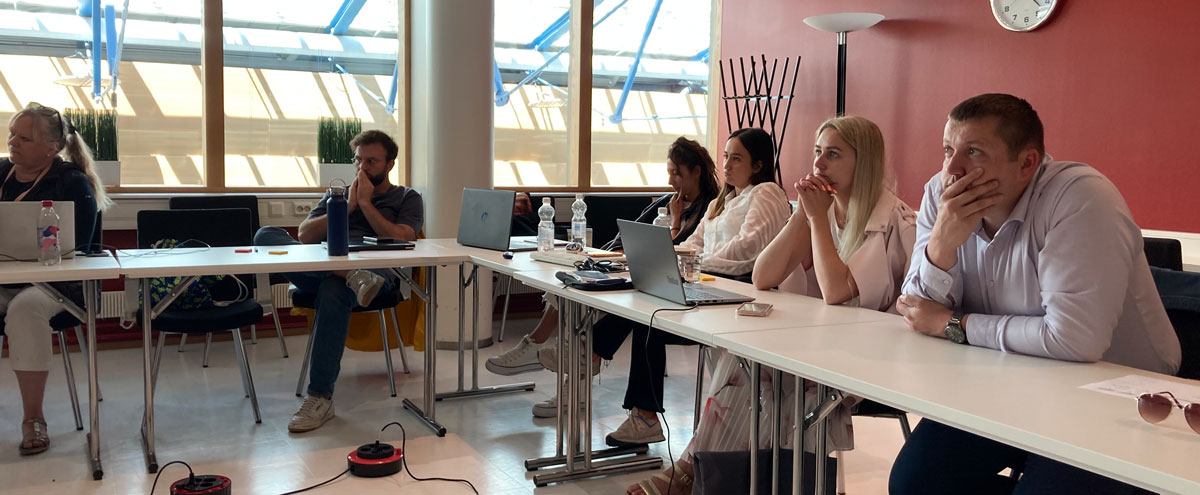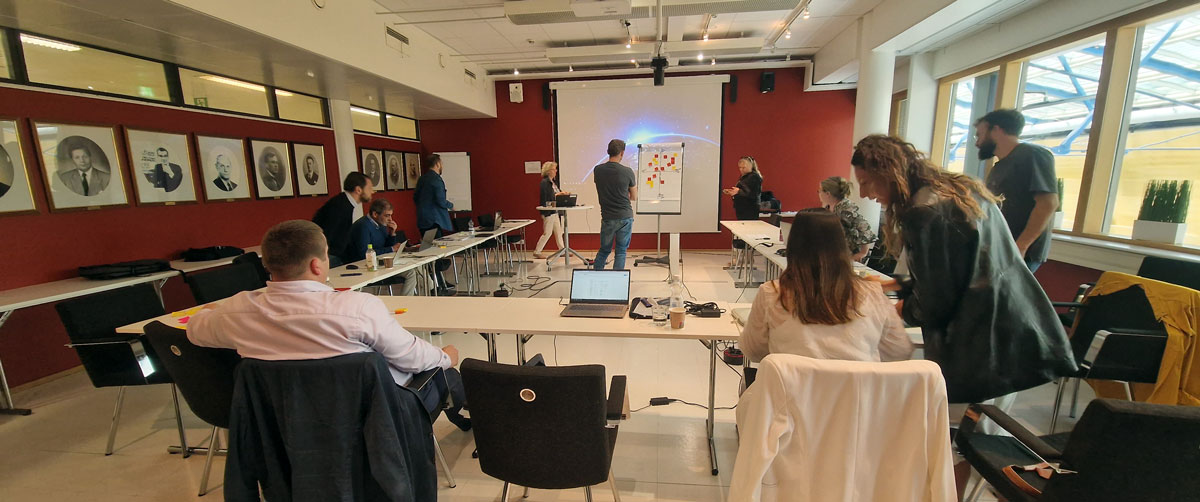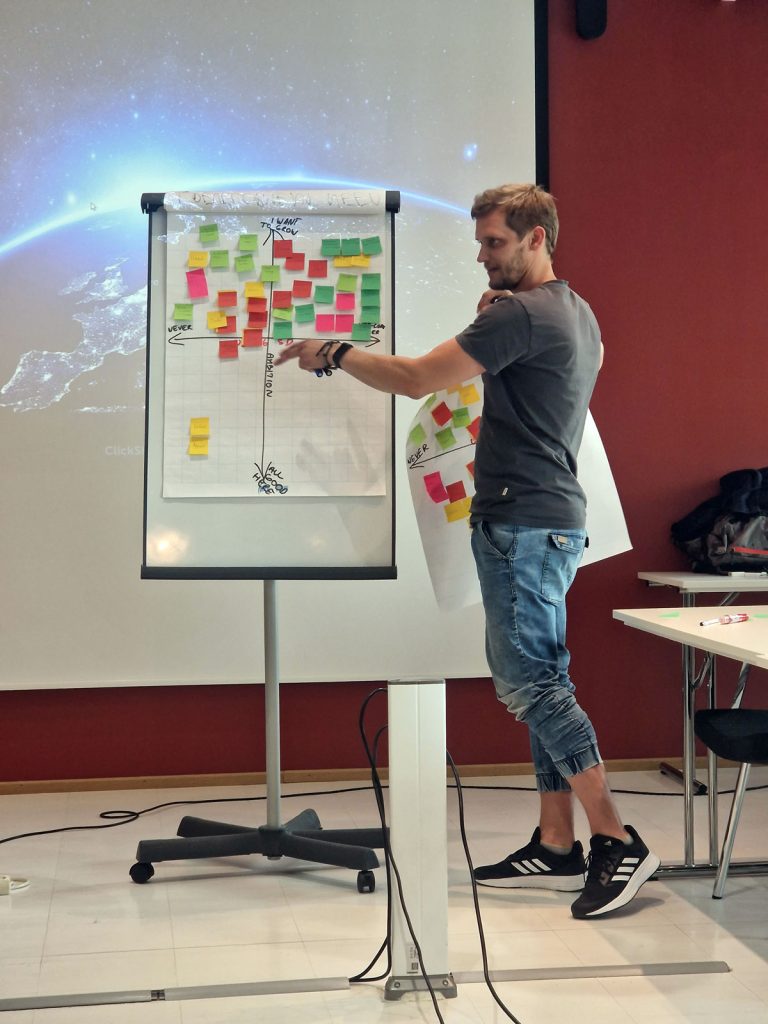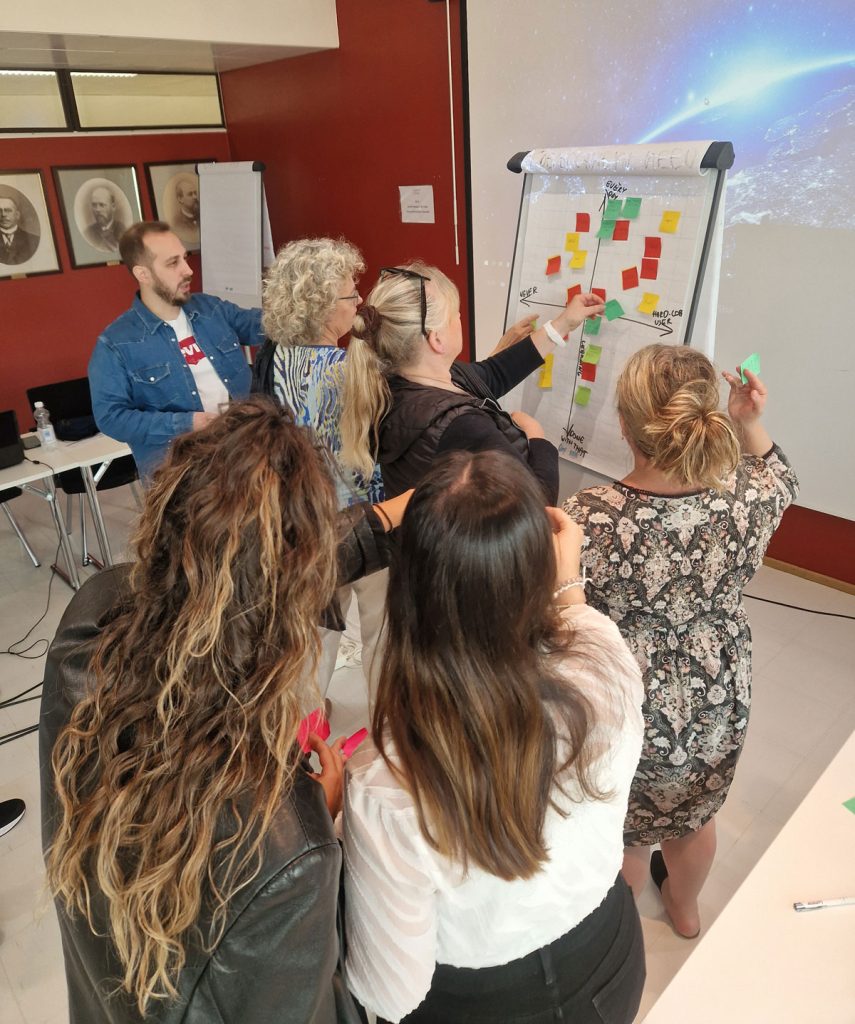Learning-Teaching-Training activity in Finland
In the week of midsummer day, we had LTT (Learning, Teaching, Training) training activity. The training took place in Finland and was organized by the local project partner SIEC. In total, LTTA lasted 4 days. 2 project partners from Finland, 1 from Cyprus, 2 from Spain, 3 from Estonia, 2 from Portugal and 2 from Greece participated in the training.

Through the activities of LTT, we had the opportunity to harmonize the project partners’ understanding of service design and how to use it for the development of sustainable business and environmentally friendly service provision, and to increase the knowledge and skills of all parties.
In order to proceed with the next steps of the project, it was necessary to achieve a common level of knowledge about this topic.
The topics of the training were:
– Service design with four process phases, focusing on synthesizing and prototyping. This, in turn, increased the participants’ knowledge of service design phases and the logic of design thinking.
– Synthesizing methods were discussed and practiced: affinity diagram, persona, empathy map, customer journey. This increased the ability to synthesize qualitative data from interviews to create personas and develop empathy maps.– Using a matrix to select ideas for prototyping.
– Prototyping methods were discussed and practiced: models, design samples, storyboards, etc.
– Value proposition and how it relates to the persona/empathy map method. Thanks to this, the skill/ability to create a value proposition based on the persona/empathy map of the target segment was acquired.
– Sustainable business models and provision of environmentally friendly services through service design. Thanks to this, the participants’ ability to connect service design with sustainable business models increased.

The activities implemented during the LTT were the following:
– Partners presented the results of their focus groups/interviews and the results were synthesized, commonalities were found.
– Based on the interview results, personas were created and analyzed. Different individuals representing findings from different countries were compared.
– Objectives, topics and learning outcomes of the study modules were discussed and a first draft was prepared to create a training approach and module curriculum.
– Options for creating an online learning environment were discussed and the first possible approach was established.
The training also helped to create a pleasant and freer communication environment between the project partners, and thanks to this, it creates a more productive environment for the efficient and effective implementation of the rest of the project’s activities.

